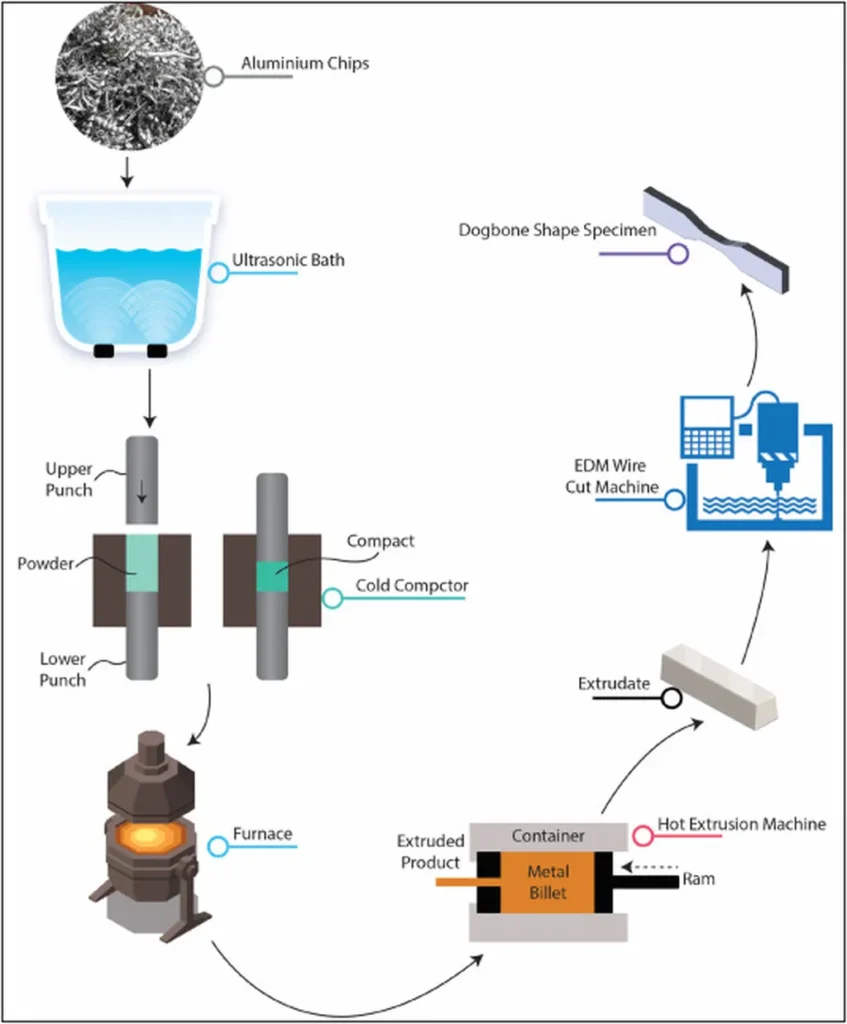In the heart of every machine shop lies a challenge: what to do with the mountains of aluminum machining chips that accumulate daily. These tiny, twisted remnants of precision work often end up in landfills, contributing to environmental pollution and squandering valuable resources. But what if there was a way to turn these chips into a valuable resource? That’s the question that drove Mebrhit Ambaye, a researcher from the School of Mechanical and Industrial Engineering, to explore innovative recycling methods.
Ambaye’s research, published in the journal ‘Advances in Materials Science and Engineering’ (which translates to ‘Advances in Materials Science and Engineering’), delves into two primary approaches for recycling aluminum machining chips. The first, direct melting, proved unsuccessful due to complete oxidation of the chips. However, the second method—a blend of chips with initially melted aluminum alloy scrap followed by remelting—showed promising results. “The blending method was found successful for mass recycling,” Ambaye explained, highlighting the potential of this approach.
The success of the blending method was validated through a series of rigorous tests. Metal yield, density, hardness, tensile strength, compressive strength, and surface roughness were all measured, with results that speak volumes about the method’s efficacy. The metal yield of 94.33% is particularly noteworthy, indicating a high level of productivity. “This high metal yield was an important productivity indicator,” Ambaye noted, underscoring the commercial viability of the method.
The chemical composition analysis revealed that the cast samples belong to the aluminum alloy class 404415s with 8.98% silicon. Additionally, X-ray diffraction (XRD) analysis showed a perfectly crystalline structure, further attesting to the quality of the recycled material. The samples were also machined to check for internal porosity or cracks, and the results were as desired, demonstrating the practical applicability of the recycled aluminum.
The implications of this research are significant for the energy sector, where aluminum is a critical material. By providing a sustainable and efficient method for recycling aluminum machining chips, this research could help reduce waste, lower costs, and minimize environmental impact. “This blending and remelting approach is strongly recommended for recycling of aluminum machining chips,” Ambaye concluded, offering a glimpse into a future where waste is transformed into opportunity.
As the world grapples with the challenges of sustainability and resource management, innovations like Ambaye’s blending and remelting method offer a beacon of hope. By turning waste into a valuable resource, this research not only addresses environmental concerns but also paves the way for a more sustainable and efficient future in the energy sector. The journey from machine shop waste to high-quality recycled aluminum is a testament to the power of innovation and the potential of sustainable practices.

